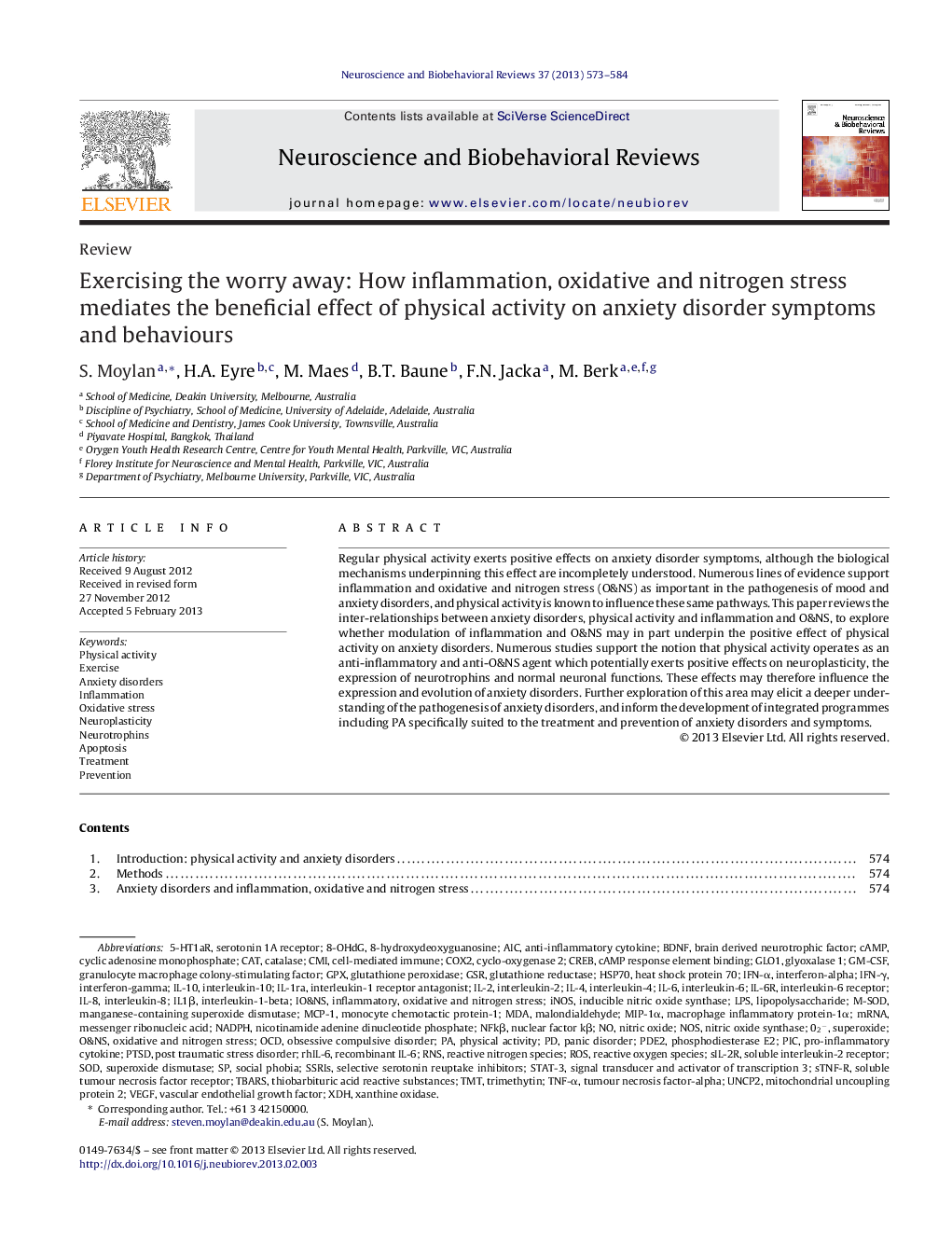| Article ID | Journal | Published Year | Pages | File Type |
|---|---|---|---|---|
| 937490 | Neuroscience & Biobehavioral Reviews | 2013 | 12 Pages |
Regular physical activity exerts positive effects on anxiety disorder symptoms, although the biological mechanisms underpinning this effect are incompletely understood. Numerous lines of evidence support inflammation and oxidative and nitrogen stress (O&NS) as important in the pathogenesis of mood and anxiety disorders, and physical activity is known to influence these same pathways. This paper reviews the inter-relationships between anxiety disorders, physical activity and inflammation and O&NS, to explore whether modulation of inflammation and O&NS may in part underpin the positive effect of physical activity on anxiety disorders. Numerous studies support the notion that physical activity operates as an anti-inflammatory and anti-O&NS agent which potentially exerts positive effects on neuroplasticity, the expression of neurotrophins and normal neuronal functions. These effects may therefore influence the expression and evolution of anxiety disorders. Further exploration of this area may elicit a deeper understanding of the pathogenesis of anxiety disorders, and inform the development of integrated programmes including PA specifically suited to the treatment and prevention of anxiety disorders and symptoms.
► Inflammatory and oxidative stress pathways may mediate the effect of exercise on anxiety symptoms. ► Numerous studies demonstrate inflammation and oxidative stress as important in anxiety development. ► Physical activity modulates inflammatory and oxidative stress pathways. ► This knowledge may inform physical activity based treatment strategies for anxiety symptoms and disorders.
